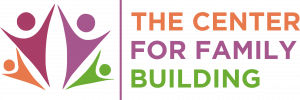Take a snapshot of difficulties in 2019 so you can move on to 2020 less fearful
As 2020 approaches, all of us here at the Center for Family Building have been reflecting on the wonderful experiences we had in 2019. We shepherded many individuals through their journey to have a child, ran our TIP TOP program to help children who came to their families with the assistance of donor eggs or sperm or adoption, learn about disclosing their stories to others. We lectured to professionals about surrogacy, donor conception and how to be sensitive to single and LGBTQ parents to be, co-authored ebooks with Edward Hallowell, MD on ADHD and adoption and ADHD and donor conception and presented research important to our field at the American Society for Reproductive Medicine. Our team facilitated more known donor arrangements and helped more intended parents with their surrogacy journeys than ever before. We assisted individuals and couples in making difficult choices, taught them how to think like a team, talk to their children about their origins, and manage their stressors so they can achieve their dreams.
Our therapists are professionally trained, licensed and have decades of experience. The Center for Family Building therapists understand the medical, emotional, and ethical subtleties in the journey to have a child and how to make that journey easier and better for the people they serve. I am so proud of our group. Unfortunately, not every story had a happy ending this year. Some of the people we see still have dreams not realized and obstacles yet to overcome. So, for those of you who are struggling, I offer you a strategy for thinking positively as you enter 2020.
If your efforts to have a child are not successful, it’s natural to feel hurt and possibly anxious about trying again. If you have already built your family but got there with some bumps along the way, it’s common to carry some of those fears with you and potentially attach those fearful feelings to other circumstances. Once a hurt has occurred, particularly a hurt that was unexpected, it is not possible to return to a naive state of being where the expectation is that things will just work out. Your body will try to protect itself from the shock of another let down by reminding you of a past problem. Even when people understand this concept, they hold on to the fear and often say things like, “It feels scary to be optimistic” or, “I feel safer when I worry”. If you need to take this stance, I understand. Protecting your heart may feel necessary.
I would never suggest you put yourself in a vulnerable position but I do think that, to some degree (it doesn’t matter if its 20% or 70%), you can train your mind to spend a little less time in that negative space and to feel less focused on the sadness.

Years ago, before we all began taking pictures with our phones, Polaroid Instamatic cameras were popular. The camera was great because you could have a picture instantly. It made a very distinct sound…”pachoo” when the finished photograph came out of the camera. The Polaroid was fast, but it only gave you one picture from that moment in time. There was no way to make copies of it, edit it or make a video with it. What if we think about our least favorite stories like a picture made with a Polaroid camera? We take a picture of what happened and acknowledge it. The trick is telling your brain that it is a moment of time in your life. There is no way to keep copies, post them, or reuse them. The picture is clear when you take it and it is evidence of something that happened. You can keep it but it does fade a bit over time and it does not become part of your story on Facebook or Instagram.
For example, think about the time you were not able to use your favorite donor. Look at the picture of when this happened in your mind, have your feelings and then put the picture down and redirect your thoughts to other things. Or the time treatment wasn’t successful, “pachoo”, have your feelings and then return to the world. You may even want to say “pachoo” out loud to remind your brain that your experience happened in a moment in time and it is now behind you.
We cannot apply this exercise to everything, and some losses are more devastating than others, but when you are able to do this, even if it’s just once in a while, you are training your mind to separate past experiences from future events.
This is an exercise that takes practice, but like most habits, practice gives our bodies an opportunity to change. Many may be thinking, “it’s too scary to be positive” or “I’m afraid to take my mind off my problem”. That may be true, but even if you can do it for a few minutes, with some repetition you may be able to relieve yourself from prolonged angst, and a little angst is always better than a lot of angst. So, as you head into this new year do what you need to do to rejuvenate yourself and then put your new energy into building skills that can help make your journey, and your state of mind better.
And remember… we are here for you. Our mission is to make your journey easier.
Warmest wishes for a wonderful and successful 2020!
